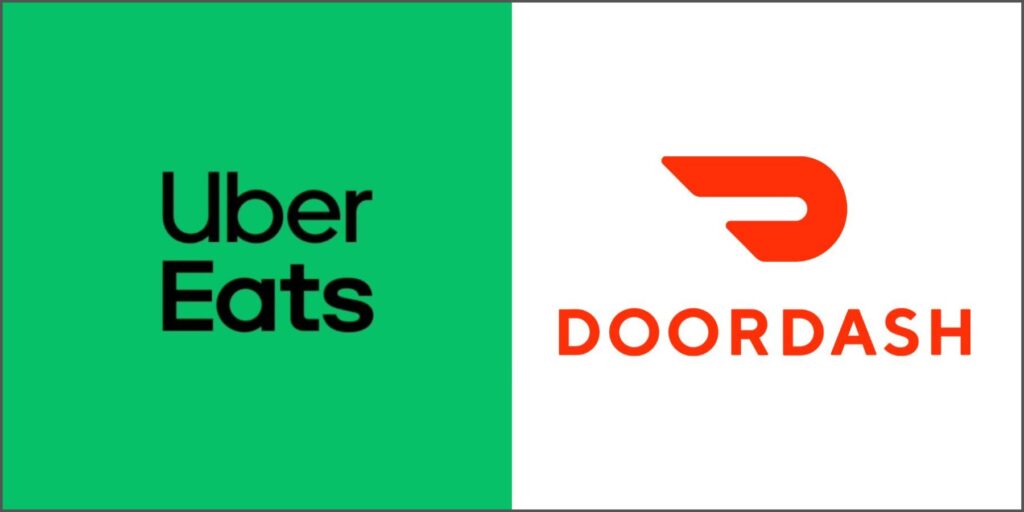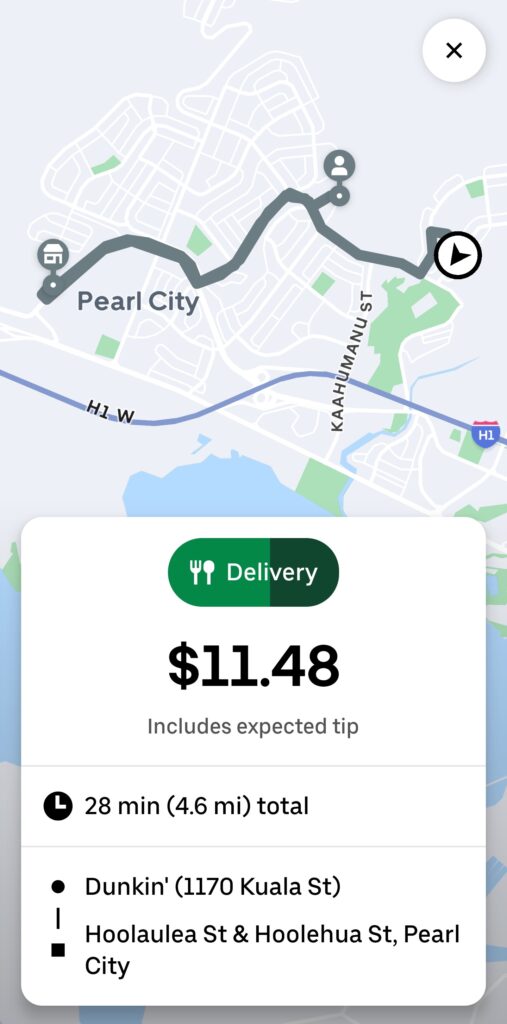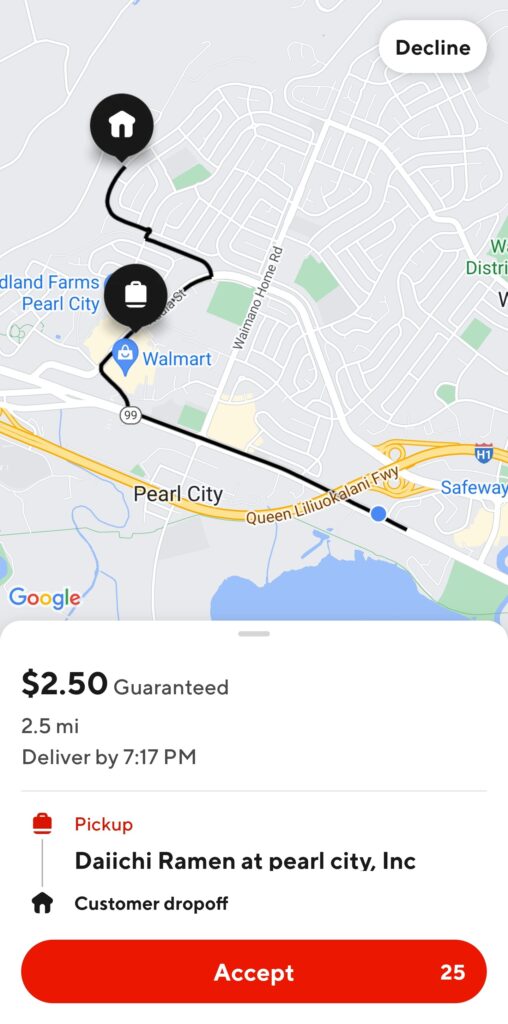
Introduction
Many may wonder, “What happens after I order my food?” As someone who has been doing gig deliveries for 5 years, I’m here to provide you with insights into the journey of your order from a driver’s perspective. A Uber Eats Doordash Behind-the-Scenes if you will. In this blog post, we’ll explore what drivers are responsible for and what the restaurants handle, shedding light on the process beyond your online food delivery.
Placing the Order and Special Requests
Drivers do not actually place the food orders. The orders are directly sent to the restaurants. If you have any special requests, such as “extra sauce,” it’s important to communicate those directly to the restaurant, as drivers are not involved in customizing the orders. We go in, grab the order, and leave.
Pay Structure and Trip Acceptance
Drivers are not paid hourly but rather by the job. Each driver determines their own dollar per mile ratio and minimum payment. For instance, I personally use a 2:1 ratio (i.e. $2 for every 1 mile) and an $8 minimum. However, each driver has the freedom to accept or decline deliveries based on their preferred ratio. It’s worth noting that many drivers are looking for more traditional employment structures with hourly wages, although they appreciate the flexibility of the current system.

Factors Influencing Acceptance
Certain factors may influence whether a driver accepts or declines a delivery. For example, drop-offs at an apartment complex with limited parking can discourage drivers. If you anticipate parking difficulties, consider meeting the driver downstairs. Additionally, some delivery locations may require specialized clearance, such as military bases, which can affect a driver’s decision to accept the order due to additional time constraints.
Ideal Delivery Locations
Every driver is different. I typically prefer delivering to houses in the suburbs or businesses in easily accessible areas, such as strip malls. These locations allow drivers to conveniently park and make the delivery without navigating through crowded indoor spaces. Again, the longer drivers spend making the delivery, the more it dilutes the fare.
Tipping Considerations
While tipping is not mandatory, it is greatly appreciated by drivers. During busy times, such as weekends, Uber and Doordash offer higher base pay to encourage drivers to accept more deliveries. However, on slower weekdays, orders will have a minimal base pay. On those days, higher tips can significantly impact a driver’s earnings.
What this means is, on weekends you can get away with tipping less, because the companies will pay drivers more. On weekdays, however, they pay much less. I’ve seen fares go as low as $2.50 for a delivery. It’s on those days where tipping more makes a difference.
If you are going to tip, I’d suggest doing so upfront, though the app. Remember, we see the total fare (tip included) when we get a trip request and there is no way for us to know if you plan on tipping after the fact or at all.
Below is a prime example of an order that I would decline without hesitation. This particular order falls short on two crucial factors: it has a 1:1 ratio, failing to meet my established $8 minimum. Furthermore, it’s classified as a ‘No Tip Order.’ Although some may consider tipping in cash upon delivery, it’s an unpredictable occurrence that cannot be relied upon. As an independent worker without hourly compensation, I must evaluate each order solely based on what’s in front of me.

Leaving Instructions for Uber Eats & Doordash Drivers
When it comes to leaving notes for drivers, if there are conflicting instructions, I won’t rely on common sense to make assumptions. For instance, if your note says “Leave at Door: Please knock,” I won’t interpret it as an invitation to knock and hand over the order. Instead, I will follow your exact instructions by leaving the delivery at your doorstep, knocking as requested, and maintaining contactless protocols (i.e. walking away).
This commitment is driven by the ongoing presence of COVID-19 and other illnesses, which led to the implementation of contactless deliveries in the first place. So, if your note simply says “leave at door,” I will assume that’s what you want. Your safety and a smooth delivery experience are my top priorities.
Interested in Becoming a Driver?
If you’re curious about what it’s like to drive for Uber Eats or DoorDash, visit their respective websites for more information. The sign-up process is relatively straightforward, requiring your driver’s license, car registration, and proof of insurance. Yes, these are affiliate links (meaning I get a kickback if you sign up through them). If you end up using them, I appreciate you 🙏
Thinking about getting into affiliate marketing yourself? Check out this post about Amazon’s Associates program. It’s one of the most commonly used affiliate programs out there
Conclusion
Next time you order food through Uber Eats or DoorDash, remember the intricate process that occurs behind the scenes. Understanding the responsibilities of drivers and restaurants can help foster a smoother and more efficient delivery experience. I hope this Uber Eats/Doordash Behind-the-Scenes shed some light on what happens after you push that order button!